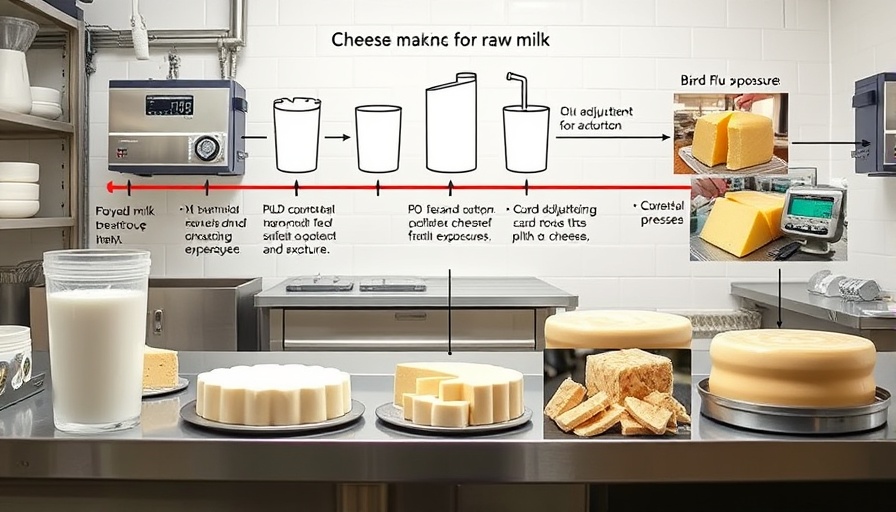
Understanding the Bird Flu's Persistence in Raw Milk Cheese
Recent findings from a Cornell University study raise significant concerns about the potential health risks associated with raw milk cheese, particularly in the context of the highly pathogenic avian influenza virus, H5N1. The research, published in Nature Medicine, demonstrates that raw milk cheese made from contaminated milk can harbor infectious bird flu viruses, posing a threat to consumers. Notably, cheeses with a higher pH between 5.8 and 6.6 were found to contain viable viruses, whereas highly acidic varieties, like feta, with a pH below 5, showed no viral presence.
Key Implications for Food Safety and Consumer Health
This study was prompted by earlier observations of significant virus shedding from infected dairy cattle and the virus's remarkable endurance in refrigerated raw milk. The implications for food safety are profound, as the U.S. Food and Drug Administration (FDA) standards require a minimum aging period of 60 days to safeguard against bacteria but may not adequately address viral threats. Indeed, the study discovered that infectious viruses could remain detectable even after 120 days of aging at just above 39°F, bucking expectations.
Potential Strategies for Risk Reduction
To mitigate these risks, experts suggest rigorous screening of raw milk for viruses prior to cheese production and perhaps employing sub-pasteurization techniques that maintain the integrity desired in raw milk cheeses while effectively neutralizing viral threats. As Nicole Martin, one of the study's authors, emphasizes, implementing such measures is crucial for the dairy industry, particularly during ongoing outbreaks that have strained milk supply chains. These proactive strategies are vital to ensure public health and safety concerning raw milk products.
Animal Testing Reveals Insightful Findings
The study also included intriguing animal research where ferrets, known for their vulnerability to H5N1, were given both contaminated raw milk and cheese. Interestingly, while those consuming contaminated raw milk became infected, none of the ferrets exposed to raw milk cheese showed any signs of infection. This suggests that the form in which the virus is ingested plays a crucial role in its ability to initiate infection. Understanding these dynamics could be pivotal in formulating recommendations for safe consumption practices.
Coping with the complexity of H5N1's persistence in food will require vigilant research and ongoing dialogue within the dairy sector. As highlighted by the research team, continued investigation is essential for refining our understanding and improving food safety protocols.
 Add Row
Add Row  Add
Add 




Write A Comment